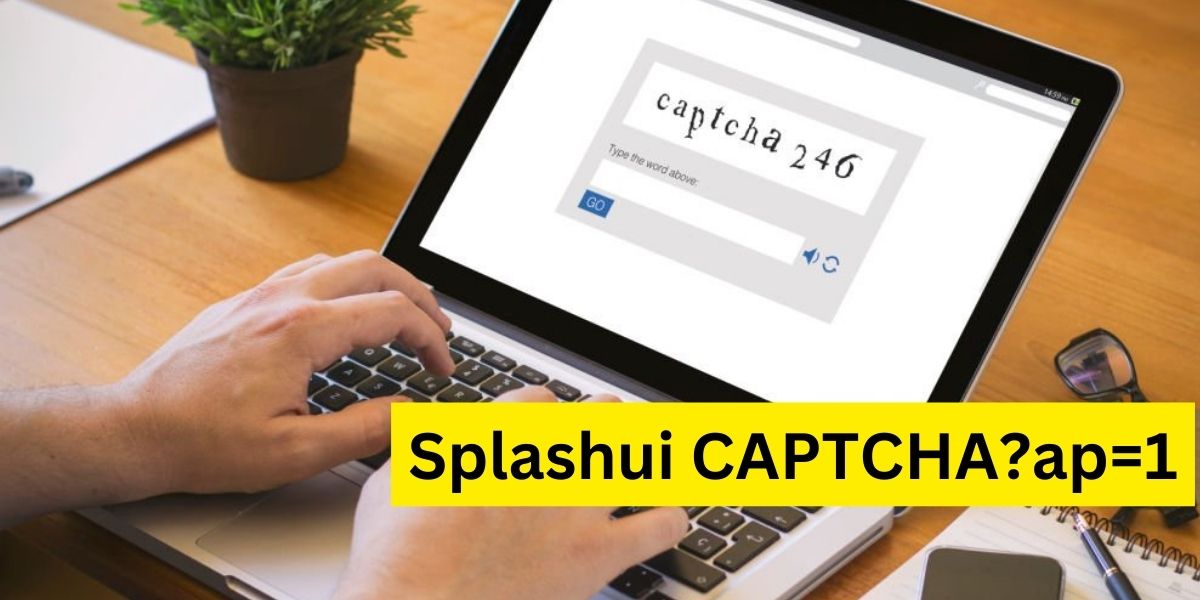In an increasingly digital world, securing websites from automated bots is essential to maintaining both privacy and integrity. Bots can spam forms, create fake accounts, and even perform attacks on a site. To mitigate this, CAPTCHA systems are used to verify that actions on a site are performed by humans. SplashUI Captcha is one such solution, offering a simple and effective way to ensure only legitimate users access your website’s functionalities. In this guide, we’ll explore what SplashUI Captcha is, why it’s important, and provide a step-by-step guide to setting it up.
What is SplashUI Captcha?
SplashUI Captcha is a security mechanism that helps distinguish between human users and bots. It requires users to complete tasks, such as clicking on images or solving simple puzzles, to prove their humanity before gaining access to a site or performing certain actions. Unlike traditional CAPTCHA systems, SplashUI Captcha focuses on providing a seamless user experience while ensuring robust protection against bot-driven attacks.
Why Use SplashUI Captcha?
- Enhanced Security: Protects your website from automated bots that can harm its integrity.
- User-Friendly: Designed to minimize user frustration by simplifying CAPTCHA challenges.
- Highly Customizable: SplashUI Captcha can be tailored to meet your website’s specific needs.
- Mobile-Friendly: Compatible with mobile devices to ensure smooth user experiences across platforms.
Step-by-Step Guide to Setting Up SplashUI Captcha
Step 1: Sign Up and Obtain API Keys
The first step to setting up SplashUI Captcha is creating an account on the SplashUI platform. Once registered, you’ll need to obtain your unique API keys that allow your website to communicate with SplashUI’s CAPTCHA service.
- Visit the SplashUI website and sign up for an account.
- Log in to the dashboard.
- Navigate to the API Keys section and generate keys for your site.
- Copy the Site Key and Secret Key—these will be needed for integration.
Integrating SplashUI Captcha into Your Website
Integration is straightforward. Depending on the platform or framework your website uses, SplashUI Captcha provides easy integration methods, including JavaScript APIs and plugins for popular CMS platforms like WordPress.
For JavaScript Integration:
- Add the following JavaScript snippet before the tag in your HTML:
html - Next, include the following code where you want the CAPTCHA to appear (e.g., login form):
html
- Replace your_site_key with the Site Key obtained earlier.
For WordPress Integration:
- Go to the Plugins section of your WordPress admin panel.
- Search for the SplashUI Captcha plugin.
- Install and activate the plugin.
- In the plugin settings, enter your Site Key and Secret Key.
Customize Your SplashUI Captcha
SplashUI Captcha offers several customization options to tailor the security mechanism to your needs. These include adjusting the difficulty level of CAPTCHA challenges and selecting between different types of tasks (e.g., image recognition, checkbox).
- In your SplashUI dashboard, go to the Customization section.
- Choose between options such as:
- Simple Checkbox CAPTCHA: “I’m not a robot” prompt.
- Image-Based CAPTCHA: Selecting specific images from a grid.
- Puzzle-Based CAPTCHA: Simple interactive puzzles.
Adjust the complexity settings based on the level of security you require.
Implementing on Key Pages
To ensure maximum protection, place the SplashUI Captcha on key pages such as:
- Login Forms: Prevent brute-force attacks.
- Sign-Up Pages: Stop bots from creating fake accounts.
- Contact Forms: Avoid spam.
- Checkout Pages: Secure payment gateways from bot activity.
Each form or page that requires CAPTCHA should include the SplashUI CAPTCHA div:
html Submit
Test the Setup
Once integrated, it’s important to test the SplashUI Captcha to ensure it works as intended across different devices and browsers.
- Desktop Testing: Open your site on multiple browsers like Chrome, Firefox, and Safari to ensure the CAPTCHA appears and functions correctly.
- Mobile Testing: Ensure that the CAPTCHA is user-friendly and responsive on mobile devices.
- User Flow Testing: Go through the normal actions a user would take, such as logging in or signing up, to confirm CAPTCHA integration doesn’t interfere with the user experience.
Monitor Performance
After the CAPTCHA is live, monitor its performance regularly through the SplashUI dashboard. The platform provides real-time data on:
- CAPTCHA Completion Rates: How many users successfully solve the CAPTCHA.
- Bots Blocked: Number of bots prevented from accessing your site.
- User Frustration Metrics: Insights into whether the CAPTCHA is too difficult for legitimate users.
Use this data to fine-tune the difficulty level or adjust where CAPTCHA appears.
Update and Maintain
Finally, ensure that your CAPTCHA system stays updated. SplashUI regularly releases updates to improve security and user experience. Always apply updates to your CAPTCHA system to keep your website secure.
Best Practices for SplashUI CAPTCHA
- Avoid Overuse: Don’t place CAPTCHA on every action, only where necessary.
- Test for Accessibility: Ensure the CAPTCHA works for users with disabilities, offering alternatives like audio challenges.
- Regularly Update: As new threats emerge, keep your CAPTCHA system up to date.
- Balance User Experience and Security: Choose CAPTCHA tasks that secure your site without overwhelming users.
Conclusion
SplashUI Captcha offers an effective and user-friendly solution for website security, protecting your site from bots while maintaining a smooth user experience. By following this step-by-step guide, you can easily integrate SplashUI CAPTCHA into your website, customize it to your needs, and ensure a balance between security and usability. As bots continue to evolve, CAPTCHA systems like SplashUI will play a crucial role in keeping your online presence safe and secure.














Leave a Reply